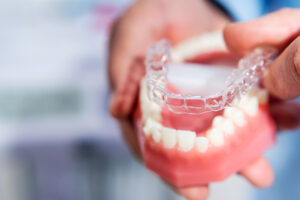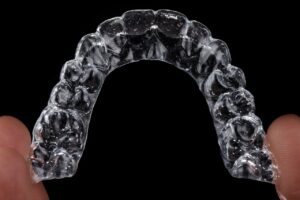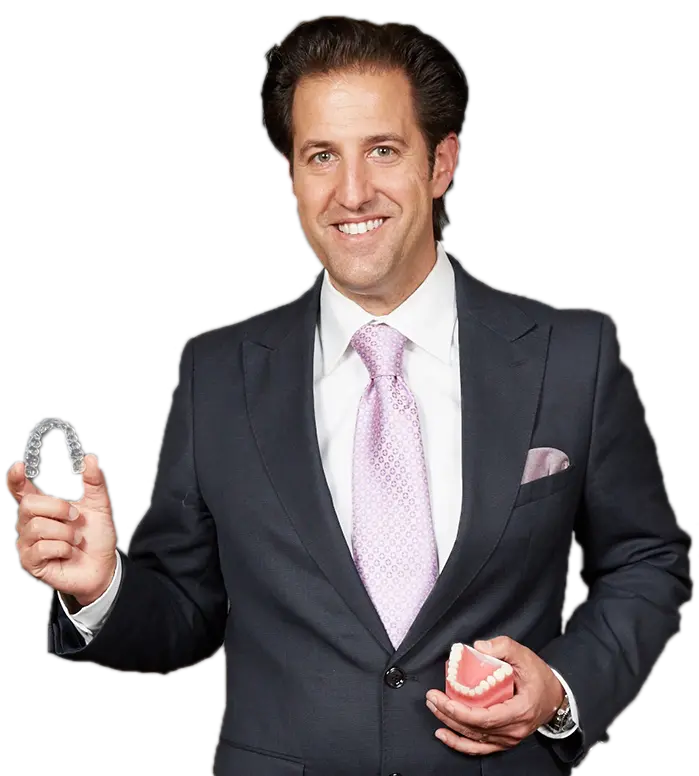How Invisalign Works: A Step-by-Step Guide to Straightening Your Smile
Imagine straightening your teeth without anyone noticing. No metal wires or brackets—just a clear, comfortable aligner that gradually shifts your teeth into place. Curious about how Invisalign works? It’s not too good to be true! Invisalign has revolutionized orthodontics, offering a discreet, convenient, and effective way to achieve the perfect smile.Whether you’re an adult who’s longed for a straighter smile or a teen who wants to avoid the “brace face” look, Invisalign might be the answer you’ve been waiting for.
What is Invisalign?
Invisalign is a revolutionary orthodontic treatment that uses clear plastic aligners to straighten your teeth. Unlike traditional metal braces, which use wires and brackets to move teeth, Invisalign relies on a series of custom-designed aligners that gradually shift your teeth into their desired position.
Overview of Invisalign
How Invisalign works involves using aligners that are made of smooth, BPA-free plastic and are designed to fit snugly over your teeth. Each aligner is slightly different, and as you move through the series, the aligners apply gentle pressure to guide your teeth into alignment. The best part? These aligners are nearly invisible, so most people won’t even notice you’re wearing them.
Why Choose Invisalign Over Traditional Braces?

- Aesthetic Benefits: The most obvious advantage of Invisalign is its discreet appearance. Traditional braces are visible, while Invisalign aligners are clear and blend seamlessly with your natural teeth, making them ideal for those who want to straighten their smile without the noticeable metal hardware.
- Removability: Invisalign aligners are removable, allowing you to take them out when you eat, drink, or brush your teeth. This means no restrictions on the foods you can enjoy, and you can continue to brush and floss normally — something that can be tricky with traditional braces.
- Comfort: Unlike braces, which can sometimes cause irritation to the gums and cheeks, Invisalign aligners are made of smooth plastic, reducing the chances of discomfort. There are no sharp edges or wires to worry about, and the aligners are custom-molded to fit your teeth perfectly.
Who is a Candidate for Invisalign?
Invisalign can be used to treat a variety of orthodontic issues, such as:
- Crooked or crowded teeth
- Gaps between teeth
- Overbites, underbites, and crossbites
How Invisalign Works
Invisalign works by using clear, custom-made aligners to gradually straighten your teeth. The process is precise and tailored to your individual needs.
Digital Scanning and Customization
Curious How Invisalign works in these modern times? Your treatment begins with digital scans of your teeth, which are used to create a 3D model of your mouth. This model helps design a personalized treatment plan, showing how your teeth will move over time. The aligners are made based on this plan, with each set designed to move your teeth step by step.
Gradual Teeth Movement
Each aligner gently applies pressure to shift your teeth in small increments. The aligners are worn for about 20–22 hours a day, and every 1–2 weeks, you switch to a new set that continues to move your teeth into better alignment.
Wearing the Aligners
The key to success with Invisalign is consistency. Aligners should be worn almost all day, removed only when eating, drinking, or brushing your teeth. Skipping wear time can slow down progress, so it’s important to follow the treatment plan carefully.
How Fast Do Teeth Move with Invisalign?
One of the most common questions people have about Invisalign is how quickly their teeth will start to shift. While every case is different, there are some general guidelines to give you an idea of what to expect.
Average Speed of Tooth Movement
On average, teeth move about 0.25 to 0.3 millimeters per week with Invisalign. While this may seem slow, it’s actually a precise, controlled process that ensures your teeth shift gently and safely. In comparison to traditional braces, Invisalign may move teeth faster in some cases, especially for mild to moderate alignment issues.
Factors Affecting Speed:
Several factors can influence how quickly your teeth move:
- Severity of Misalignment: More significant dental issues, like large gaps or severe overbites, may take longer to fix.
- Age and Bone Density: Younger patients typically experience faster tooth movement due to more flexible bones. For adults, the process can be slower, but still effective.
- Compliance with Treatment: The more consistently you wear your aligners, the faster your teeth will move. Missing wear time or not switching to the next aligner on schedule can delay progress.
What to Expect During Treatment:
- Initial Stages: You’ll likely notice some changes in the first few weeks as your teeth start shifting. This is when most of the visible movement occurs.
- Mid-Treatment: At this point, the changes might not be as dramatic, but your teeth will continue to gradually align.
- Final Stages: As you near the end of your treatment, your orthodontist will make any final adjustments to ensure your teeth are perfectly aligned.
How Invisalign Works: How Long Does It Take for Invisalign to Work?
The time it takes for Invisalign to straighten your teeth depends on several factors, including the severity of your dental issues and how closely you follow your treatment plan.
Average Duration of Treatment
For most adults, Invisalign treatment typically takes between 12 to 18 months. However, the timeline can vary based on your specific needs. Some people may see results in as little as 6 months if they have minor alignment issues, while more complex cases could take up to 2 years.
Shorter vs. Longer Treatment Times
- Mild Misalignment: If your teeth are only slightly crooked or misaligned, treatment may be shorter, around 6-12 months.
- More Complex Cases: If you have more severe issues, like a significant overbite, large gaps, or rotated teeth, treatment may take longer, sometimes up to 24 months.
Maintaining Results After Treatment
Once your Invisalign treatment is complete, your orthodontist will likely recommend wearing a retainer to keep your teeth in place. Retainers are important because teeth can shift back to their original positions if not properly maintained. Retainers are typically worn at night, ensuring that your smile stays straight for the long term.
What Are the Negatives of Invisalign?
While Invisalign has many advantages, there are a few potential drawbacks to consider.

- Discomfort and Adjustment Period: While Invisalign aligners are generally more comfortable than traditional braces, you may experience some soreness when first wearing them or switching to a new set. This is part of how Invisalign works to gradually shift your teeth into place, and mild irritation on your gums or cheeks may occur initially.
- Discipline and Commitment: To get the best results, you need to wear your aligners for 20–22 hours a day. Missing wear time can delay progress, so it’s important to stay consistent. How Invisalign works depends on regular use to ensure your teeth shift as planned.
- Potential for Treatment Delays: Since Invisalign aligners are removable, there’s a risk of losing or damaging them, which could delay treatment. It’s crucial to keep track of your aligners and stick to the prescribed schedule to avoid setbacks.
- Limitations for Severe Cases: How Invisalign works is effective for many cases, but it may not be suitable for severe bite problems or significant misalignments. In such cases, traditional braces may be a better option.
Despite these challenges, Invisalign’s comfort, convenience, and discretion make it a popular choice for those looking to straighten their teeth, with the benefits often outweighing the drawbacks when proper care is taken.
How Invisalign Works: Benefits of Choosing Invisalign
Invisalign offers several benefits that make it an appealing choice for those looking to straighten their teeth discreetly and comfortably.
Transform Your Smile with the Best Invisalign Specialist in West Windsor
Trust the best in the field. Dr. Jonathan Nicozisis of West Windsor Orthodontics, a nationally recognized Invisalign expert, brings unmatched experience and expertise to your treatment. As a leading orthodontist in West Windsor, NJ, Dr. Nicozisis has lectured worldwide and co-authored a textbook on Invisalign techniques.
His innovative approach has even helped create specialized Invisalign treatments for teenagers and younger patients. With his guidance, you’ll experience personalized care and faster results, thanks to advanced technologies like Propel to speed up your treatment.
Don’t let anyone tell you Invisalign isn’t right for you or your child. Schedule a consultation with Dr. Nicozisis today!




